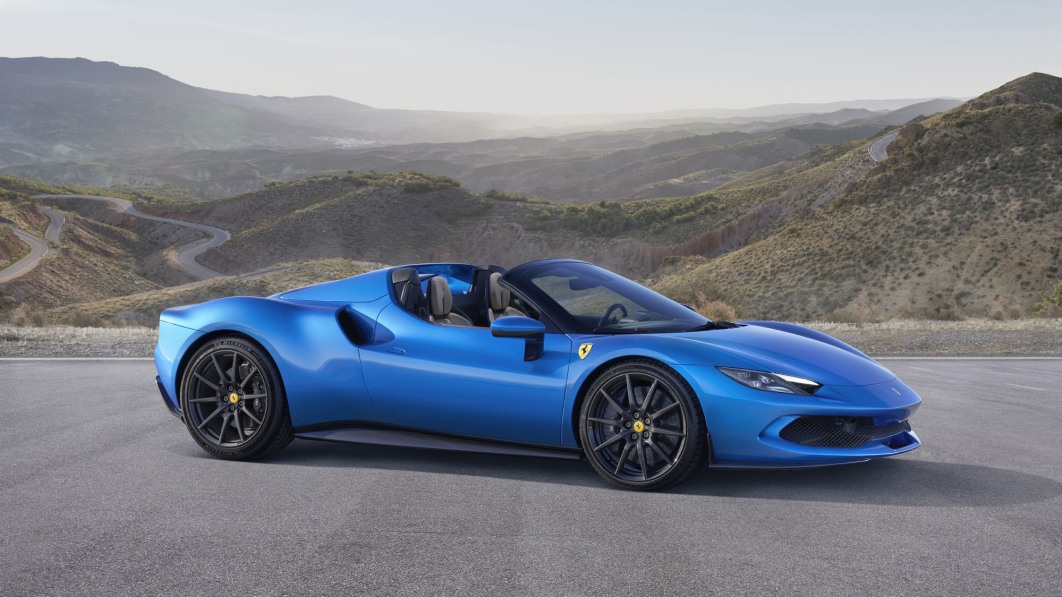Ferrari 296 GTS revealed as the 296 GTB's convertible sibling

Ferrari has introduced the roof-less version of the V6-electric 296 GTB unveiled in 2021. Equipped with a power-folding hardtop, the roadster becomes the latest in a long line of Prancing Horse models to wear the GTS (Gran Turismo Spider) designation.
The biggest visual difference between the GTS and the GTB is the roof. The two-piece panel retracts in 14 seconds at up to 28 mph, letting fresh air and the V6’s exhaust note permeate the cabin. Ferrari reshaped the decklid to fit the top’s mechanism, though the engine remains visible through a glass window. We’re told that bigger changes are found beneath the sheetmetal: engineers redesigned the engine bay to fit the top without sacrificing cooling, and the exhaust resonator system has been optimized to ensure that the V6 is clearly heard.
Inside, the seats and parts of the center console are specific to the GTS, but many of the important changes are not immediately visible. For example, the trim behind the headrests was optimized to channel much of the air that makes its way into the cabin when the top is down towards the decklid. This reduces the amount of annoying turbulence that swirls around the passengers, especially at higher speeds.
Ferrari made no mechanical changes to the 296 GTS, so power comes from the same gasoline-electric plug-in hybrid powertrain fitted to the 296 GTB. It consists of a 3.0-liter, twin-turbocharged V6 that works with an electric motor linked to a 7.5-kilowatt-hour battery pack to send 818 horsepower and 545 pound-feet of torque to the rear wheels via an eight-speed automatic transmission. The system is capable of powering the GTS on electricity alone for about 15 miles. More important, the two power sources unlock a 0-to-62-mph time of 2.9 seconds, a 0-to-124-mph time of 7.6 seconds, and a 205-mph top speed. Coming to a full stop from 124 mph takes about 117 yards.
Modifications made to the A- and B-pillars as well as the sills improve the GTS’ torsional rigidity and bending stiffness compared to some of the firm’s previous roadsters. Ferrari notes that it went to significant lengths to keep as much of the 296 GTB’s driving dynamics as possible. However, the top’s mechanism inevitably adds weight: The GTS has a dry weight of 3,395 pounds compared to 3,234 pounds for the GTB.
Ferrari will begin building the 296 GTS in the coming months. Pricing information hasn’t been announced yet, but we already have an idea of what will be found on the list of options. Buyers who want a more handling-focused roadster will be able to order a package called Assetto Fiorano that adds adjustable Multimatic shock absorbers, a carbon fiber body kit that adds downforce, plus extra carbon fiber bits inside and out. Enthusiasts who tick this box can also add a special livery inspired by the 250 Le Mans and Michelin Pilot Sport Cup 2 R tires.



